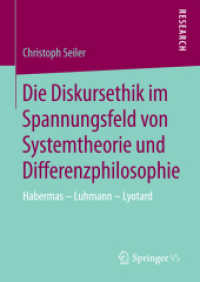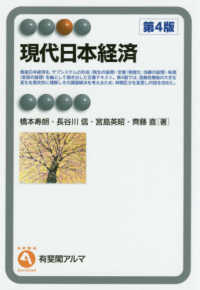- ホーム
- > 洋書
- > ドイツ書
- > Humanities, Arts & Music
- > Arts
- > architecture
Full Description
For nine days in late September of 2022, the iconic Barcelona Pavilion—designed by Ludwig Mies van der Rohe and Lily Reich in 1929—was host to a kind of counterfactual provocation. A new piece of architecture, inserted into the Pavilion's garden and peeking over the travertine wall that forms its famous entry court, referred respectfully to the archetypal language of the once-exotic steel, concrete, and stone masterpiece, but was instead constructed entirely from "mass timber," cross-laminated timber panels sourced from regional forests and manufactured in nearby Galicia.
The architectural intervention posed a radical alternative to modernism's materiality: renewable, sustainably-sourced, carbon storing bio-fiber that might transform buildings—and one day whole cities—from massive sources of greenhouse gas emissions into climate restoring carbon sinks. Underpinned by extensive documentation, the book explores the making of this much-admired symbol of architectural modernity and its material alternative.
Mass is More is the first volume in the new book series Bauhaus Earth Manuals, which will explore case studies of sustainable building and planning and its scalability on a planetary level.








